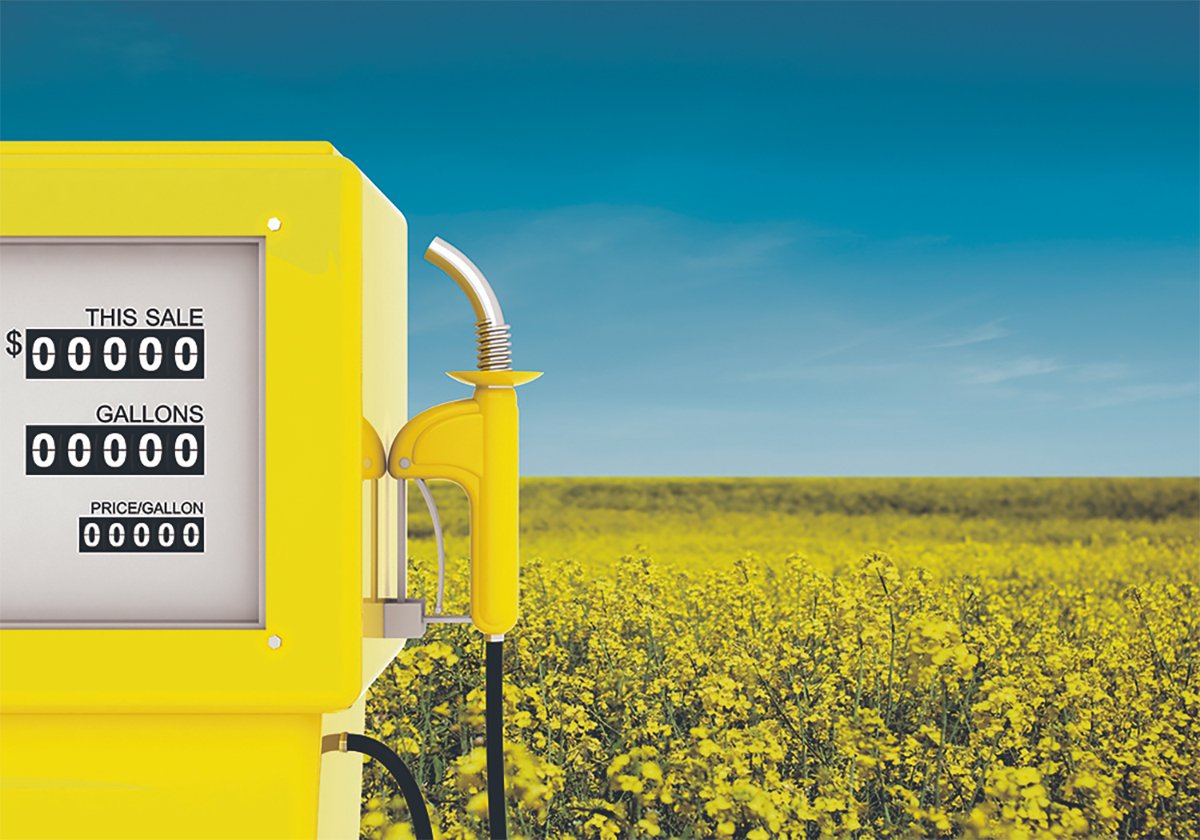Recent price action in corn shows what goes up can also go down.
Like a rising tide, the corn rally lifted the price of all crops this year. But the water level dipped in the last few days and farmers can’t rule out a further drop.
“I would take the message from the corn market and the wheat market and others that bull markets don’t last forever,” said Ken Ball of Union Securities in Winnipeg.
He commented on the plunge in corn prices and sympathetic stumble in other crop prices following the March 30 United States Department of Agriculture planting intentions report.
Read Also

Biofuel sector happy with federal budget
Advanced Biofuels Canada says new Biofuel Production Incentive is a lifeline until CFR amendments are in place.
“Even though this one has lots of potential in the long term, it could falter in the short term if the crop gets off to a good start. All of these crop markets could take a terrible beating.”
The long rally in the price of corn and other crops began to falter a few weeks ago, with commodities such as wheat noticeably declining from highs. But the collapse of corn and other crop prices on the release of the USDA report shows the market is willing to believe bearish news, setting aside months of positive stories about the potential of corn this year.
If corn can fall, anything else can fall, Ball said.
“I think it’s a reminder that even corn, with all of its aggressive demand and potential, can falter, and it’s certainly possibly for any of these crop markets to come down,” he said.
Corn and soybeans are often seen as the opposite sides of the crop markets because they compete for acres. A big acreage increase in one usually means an acreage drop in the other, leading to a smaller crop and eventually stronger prices.
But the market action on March 30 shows that the price of everything now is directly linked to corn. That’s why the soybean market initially reacted to the bearish corn acreage number rather than the bullish soybean acreage number.
And in the longer term, without corn’s bullishness, there’s no reason to explain today’s high soybean prices, which Ball says would be under $5 US per bushel in usual circumstances.
“I’m not sure that beans are going to react all that bullishly overall (to the USDA report’s projections of a large decline in soybean acres), because they’re already very high,” said Ball.
“The only reason they were up here is because of corn.”
Similarly, said Canadian Wheat Board analyst Jason Newton, wheat prices are much higher than they would be if only wheat market factors supported the price.
“Wheat isn’t really a story on its own,” said Newton. “It’s really being propped up by corn prices.”
The USDA report found more wheat acres altogether, although fewer hard red spring wheat acres, but the sudden selloff in wheat was due to the corn acreage number, he said.
Canola prices might look relatively good to farmers because they are high in historical terms, but they are actually weak compared to their usual relationship to soybeans. There is little price premium for canola over soybean compared to normal times, and that reveals a broader weakness in the canola market, Ball said.
“Canola is very, very, very cheap,” compared to soybeans, he said. That doesn’t suggest canola prices are about to rally, but means real challenges maintaining today’s prices.
Ball said the U.S. soy oil prices are high, but stocks are also at record levels, so there is little potential for large sales of Canadian canola oil to the U.S. market.
“I don’t know where they’d store it,” said Ball.
With corn appearing to be mortal and canola having its own internal weaknesses, Ball urged farmers to consider pricing some of their 2007-08 crop, even if the longer term projections of most analysts, including himself, are for higher prices.
Newton said the market’s reaction to the USDA report revealed that the market will likely be extremely volatile this year, and this report introduces the market’s most volatile period.
“The next thing to watch is the weather,” said Newton.
“Overall, the market will forget about this report once it starts watching (weather) forecasts.”















